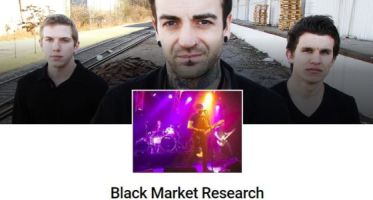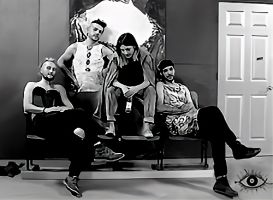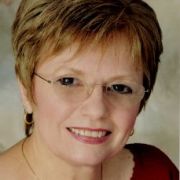The Newsroom, Blogs, Articles, Featured Guests, Headlined Shows and Indie Music
Lawyer, World Bank Whistleblower
Guest Biography From: http://kahudes.net/about-us/
Karen Hudes studied law at Yale Law School and economics at the University of Amsterdam. She worked in the US Export Import Bank of the US from 1980-1985 and in the Legal Department of the World Bank from 1986-2007. She established the Non Governmental Organization Committee of the International Law Section of the American Bar Association and the Committee on Multilateralism and the Accountability of International Organizations of the American Branch of the International Law Association.
In 2007 Karen warned the US Treasury Department and US Congress that the US would lose its right to appoint the President of the World Bank if the current American President of the World Bank did not play by the rules. The 66 year old Gentlemen’s Agreement that Europe would appoint the Managing Director of the IMF and US would appoint the World Bank President ended in 2010
In 1999 Karen reported the corrupt take-over of the second largest bank in the Philippines. Lucio Tan, a crony of Joseph Estrada, then President of the Philippines, acquired stock owned by government employees in Philippines National Bank (“PNB”) valued more than 10% of PNB’s outstanding capital without disclosure, as required by Philippines securities laws. Tan owned Philippines Airlines, in default on its loans from PNB. The government of the Philippines loaned $493 million to PNB after PNB’s depositors made heavy withdrawals. $200 million of a loan from the World Bank and a $200 million loan from Japan were cancelled. Estrada was ultimately impeached, and in 2007 an anti-corruption court in the Philippines required Estrada to refund graft he had plundered. The Bank’s Country Director in the Philippines reassigned Karen when she asked him to sign a letter warning the Philippines’ government that the Bank could not disburse its loan without a waiver from the Board of Executive Directors since the loan conditionality was not met. The World Bank’s Internal Audit Department refused to correct the satisfactory evaluation of the Bank’s supervision performance or the flawed report of the Institutional Integrity Department to the Audit Committee of the Board of Executive Directors. When the Audit Committee requested an audit of internal controls over financial reporting, KPMG, the external auditors, circumscribed the scope of their audit in violation of Generally Accepted Accounting Principles and Generally Accepted Auditing Standards.
Two days after informing the Board’s Audit Committee of the cover-up in the Philippines, Karen was reprimanded and placed on probation. The Dutch Ministry of Foreign Affairs requested the World Bank’s Audit Committee to look into the cover- up. Instead, the Chair of the World Bank’s Audit Committee requested an inquiry into the World Bank’s Institutional Integrity Department. The Senate Committee on Foreign Relations followed up with three letters to the World Bank. The World Bank forged documents and fired Karen in contempt of Congress. The World Bank also fired the Staff Association’s lawyer. The Staff Association stated that what had happened to Karen had damaged staff morale and prevented others from reporting misconduct. The World Bank’s Ethics’ Officer left in frustration after her request for an investigation by the World Bank’s Institutional Integrity Department was turned down.
Mr. Paul Volcker headed the 2007 inquiry into the Institutional Integrity Department. The Volcker Panel was discredited after sixteen staff employed in the Institutional Integrity Department received significant damage awards in compensation for abuses of authority to intimidate them during the Volker Panel investigation. A staff-member of the EU’s anti-fraud agency, Office Lutte Anti-Fraude, on the Volcker Panel wrote to Karen: “My Director General and I met with a number of European Executive Directors of the World Bank a few weeks ago to discuss the Volcker Panel report. At the meeting there was also discussion about governance issues. My impression was that the European Executive Directors are well apprised of all relevant issues at the Bank and no further comment by OLAF is warranted even if it was within our legal competence.”
Karen informed Senator Bayh, “[t]he ongoing cover-up is an indictment of the probity of US oversight at the Bank and I would encourage the Senate to request GAO to look into it.” Senators Richard Lugar, Evan Bayh and Patrick Leahy requested GAO to investigate “internal resistance to increased transparency and accountability at the World Bank.” In 2008 Karen’s Congressman, Representative Chris Van Hollen, noted “that [Karen's] claims and concerns have already been provided to the GAO…. and to the relevant congressional committees.” In 2009 GAO stated that it could not commence the inquiry “because of challenges we recently faced in gaining access to World Bank officials.” Senator Lugar asked what was delaying the GAO review during hearings on the World Bank’s capital increase.
Mr. Pieter Stek, then Executive Director for the Netherlands, and Chair of the Board Committee on Development Effectiveness, said: “In a multilateral institution which should be governed by the rule of law and high standards of probity the charge of concealment from the Board of Executive Directors of information relevant to the exercise of its duty of supervising management and the persecution of the person who brings this to light is extremely serious. If correct, which I believe, this poisonous cocktail undermines good governance and ultimately the effectiveness of the Bank in fulfilling its mandate. I shall continue to assist Ms. Hudes in her efforts to have due process brought to bear, preferably by the Bank itself, on these issues of governance.”
David Brooks wrote: “Then there are violations, when someone intentionally breaks the rules. Errors can be very hard for outsiders to detect. It was people inside the companies who were most likely to report fraud, because they have local knowledge. And yet 80 percent of these whistleblowers regret having reported the crimes because of the negative consequences they suffered. This is not the way to treat people who detect error.”
School Safety and Security Expert
Wolfgang Halbig is a nationally recognized school safety and security professional who has done extensive work in researching and developing the “Standards for Safe Schools”. He is an expert witness in the field of school safety and security. He has testified before a Congressional Commission studying school safety and security. Wolfgang was the former Executive Director of the National Institute for School and Workplace Safety. Wolfgang was also appointed by the Florida Governor to serve on the State of Florida Safe Schools Commission.
Wolfgang is also the author of a book for educators and school bus drivers on aggressive behavior management and the use of reasonable force, as well as numerous magazine articles. His article on “Breaking the Code of Silence” was published in the March 2000 edition of the American School Board Journal. He has been a featured guest on many national news programs including Dateline NBC, Good Morning America, and MSNBC.
Wolfgang was the Director of Safety and Security for a large public school system in Florida and brings to the company a national reputation in school safety, education and law enforcement. He has experience with U.S. Customs and as a Florida State Trooper. After leaving law enforcement, he went into education as a teacher, administrative leader, and finally Director of Safety and Security. His 35 years of work experience is a major asset to any involvement with safety and security.
REGARDING SANDY HOOK MASSACRE
After only filing Connecticut Freedom Of Information requests about the alleged Sandy Hook ‘massacre’, School Safety expert Wolfgang W. Halbig was visited by homicide detectives warning him that if he keeps making inquiries he would suffer the legal consequences.
Halbig also discovered that the report on the Sandy Hook event was the first school shooting in US history to be sealed as ‘Classified’, held by the FBI.
Halbig believes the Sandy Hook school shooting was a giant, elaborate hoax and no one really died.
For Halbig, there are unanswered questions, lots of them.
For instance, why in the immediate aftermath of the shooting were no medical helicopters summoned?
“Think about it: you have 20 children, 6 staff members who were supposed to have been shot. They’re seriously injured. Where’s the trauma helicopters? Those are the quickest and the best medical services that any child or any school staff member can receive, and no trauma helicopters were ever requested?”
Halbig also called Life Star emergency services, who confirmed they were never summoned that morning. “[T]hey said, ‘Mr. Halbig we were never requested on that morning. We were shocked and surprised, we were ready, we thought we were going to go to Sandy Hook.’ They had helicopters ready to go, but they were never asked.. Here’s my premise.. there wasn’t anybody there to be treated.”
Halbig also questions why EMT and firefighters, who were mere minutes away from the scene, were prevented from entering the school and possibly saving lives, and additionally, he wants to know how, within the first 11 minutes, America was already presented with a death toll.
“Who declared all those 26 people dead within the first 11 minutes? Connecticut law states that only a doctor can declare them dead, legally dead.”
Moreover, Halbig says the FBI’s classification of the school shooting report is something he’s never witnessed in his entire career. “I can tell you [out of] all the shootings, never has an FBI agency ever classified an investigative report on a school shooting.”
More Unanswered Questions...
There are also a whole host of peculiarities Halbig is still baffled by.
For example, why was Sandy Hook elementary torn down? Even in the Columbine tragedy, whose crime scene Halbig assisted with and in which he testified as a key witness, the school was cleaned up, but was never torn down.
According to Halbig, no one could tell him which environmental company cleaned up the bloody mess, or who installed the school’s security system, all things his job would require him to know.
He has other pressing questions, such as:
Why was there a registered nurse found in the building four hours after the shooting?
Why was there a sign flashing “Everyone must sign in?”
Why were there port-a-potties on site within three hours?
Why were children turned around by officers and sent back into rooms supposedly littered with dead bodies?
How did someone with Asperger’s have the physical coordination to carry the large amount of munitions Adam Lanza supposedly carried?
Why did no parents file a lawsuit against the school, when in every other school shooting suits have been filed?
And ultimately, why would the state threaten Halbig?
President - Nevada Boxing Hall of Fame & Sportscaster
Rich Marotta is an American sportscaster in Reno, Nevada, formerly a resident of Los Angeles, California. He received the high honor of induction into two Halls of Fame in 2011. In February, Rich was inducted into the Southern California Sportscasters Hall of Fame. Then in June, he was inducted into the California Boxing Hall of Fame. Rich holds the singular distinction of being the only sportscaster in Los Angeles to have ever been part of the regular broadcast teams of three major league franchises. He was the color analyst for the Los Angeles Kings of the NHL alongside Bob Miller, the Oakland/Los Angeles Raiders of the NFL, and Los Angeles Clippers in the NBA.
Since 1982, Rich has called boxing on several stations and networks, but primarily on FOX Sports Net, Prime Ticket and KCAL-9 in Los Angeles. He is also seen frequently on pay-per-view and internationally televised cards. Rich has received four Emmy Awards, three of them for his work on boxing telecasts. In 2006, he was honored with the Sam Taub Award for Boxing Broadcast Excellence by the Boxing Writers Association of America. He is currently heard on radio Monday through Friday, providing both sports and general commentary, on the #1 rated Bill Handel Morning show, which airs on KFI-AM 640 in Los Angeles. He also previously hosted Southern California’s only radio boxing show, “Rich Marotta’s Neutral Corner” for 11 years.
Author/Psychiatrist/Hostage Negotiator
DR STEVE PIECZENIK is a critically acclaimed author of psycho-political thrillers and the co-creator of the New York Times best-selling "Tom Clancy's Op-Center" and "Tom Clancy's Net Force" book series. He is also one of the world's most experienced international crisis managers and hostage negotiators. His novels are based on his twenty years experience in resolving international crises for five U.S. administrations.
Dr. Pieczenik received his B.A. from Cornell University,trained in Psychiatry at Harvard and has both an M.D. from Cornell University Medical College and a Ph.D. in International Relations from M.I.T.
He was the first psychiatrist ever to receive a PhD. focusing on international relations, and is the only psychiatrist to ever have served as a Deputy Assistant Secretary of State. He served four presidents as Deputy Assistant Secretary of State under Nixon, Ford, Carter, and Bush Sr. and was a Senior Policy Planner under president Reagan. Dr. Pieczenik worked directly with, and reported directly to, Secretaries of State Henry Kissinger, Cyrus Vance, George Schultz and James Baker, as well as the respective White Houses. Dr. Pieczenik was drafted into the Vietnam War. He was assigned in the Public Health Services with the rank of Navy Captain (0-6) to run three psychiatric wards at St. Elizabeth's Hospital in Washington, D.C., including a ward where serial killers were housed. He was subsequently offered a promotion to Rear Admiral (0-7), which he refused on the grounds that he felt honored enough to serve his country, did not want to take a pension and wished to return to civilian life to follow his passions as a physician, entrepreneur and novelist.
Dr. Pieczenik is an expert in psychological warfare, political psychology, regime change, intelligence, counterintelligence and covert operations. During his career as a senior State Department official, Dr. Pieczenik utilized his unique abilities and expertise to develop strategies and tactics that were instrumental in resolving major conflicts in Asia, the Middle East, Latin America, Europe and the United States.
Dr. Pieczenik was the principal International Crisis Manager and Hostage Negotiator under Secretaries Kissinger and Vance. During this time he developed conflict resolution techniques that were instrumental in saving over five hundred hostages in different terrorist episodes, including the Hanafi Muslim Siege in Washington, DC, the TWA Croatian Hijacking, the Aldo Moro Kidnapping, the JRA Hijacking, the PLO Hijacking, and many other incidents involving terrorists such as Idi Amin, Muammar Quaddafi, Carlos, FARC, Abu Nidal and Saddam Hussein. Based on these experiences, Dr. Pieczenik, along with other senior officials at the State Department developed the mandate to create Delta Force and other quick-strike special forces units that could be used in future hostage situations and international crises. Dr. Pieczenik resigned over President Carter's handling of the Iran Hostage siege. He was recruited by Dr. Richard Solomon to the RAND Corporation in Santa Monica, CA to develop the strategy and tactics using the principles of psychological warfare to dismantle the Soviet Union without the use of military force.
He was subsequently recruited into the Reagan Policy Planning Staff at the State Department. While at the State Department, Dr. Pieczenik was tasked with creating and implementing regime change in Panama to overthrow General Manuel Noriega. As a result, General Noriega repeatedly accused Dr. Pieczenik in the Panamanian newspaper, La Critica, of being an "assassin" and neutralizing several of Noriega's associates. This is a charge Dr. Pieczenik neither confirms nor denies.
Dr. Pieczenik helped develop negotiation strategies for major U.S.- Soviet arms control summits under the Reagan administration. He was also involved in advising senior officials on important psycho-political dynamics and conflict mediation strategies for President Carter's successful Camp David Peace Conference. In 1991, Dr. Pieczenik was a chief architect of the Cambodian Peace Conference in Paris.
He has worked with Dr. Richard Solomon to develop the theoretical basis for the Chinese Negotiating Behavioral Strategy, a classic in transcultural negotiations.
Dr. Pieczenik continues to volunteer his time and expertise as a consultant to the Department of Defense. He does not accept any remuneration for his services. He felt honored to work for his country that adopted him as a refugee and saved his family from extermination in the Holocaust. He has made it his life-long commitment to work to protect and preserve America’s liberties and freedoms, even when it meant going against the president of the United States and the very organizations with which he was working. To this day he still strongly believes in the integrity of the Office of the Presidency and the Republic, both of which must be bereft of corruption, deception, betrayal, collusion and crony capitalism by any and all parties, including financial, political, medical, pharmaceutical and academic special interests. His basic belief is that no one person is indispensable to the viability of State.
Dr. Pieczenik has started several successful companies, employing his methodologies in various industries, including investment banking, publishing, television/film and medicine. He has been directly involved as an Angel Investor with starting twenty-eight companies.
Prominent UFO Abduction Researcher, Author and Lecturer; MUFON’s Director of Abduction Research and Recipient of MUFON’s “Researcher of the Year” award in 2012
Kathleen Marden is a prominent UFO abduction researcher, author and lecturer with 23 years experience in the field. She is MUFON’s Director of Abduction Research. For ten years Kathy volunteered as MUFON’s Director of Field Investigator Training. In 2012, she was the recipient of MUFON’s “Researcher of the Year” award.
She earned a B.A. degree in social work, with honors, from the University of New Hampshire in 1971, and participated in graduate studies in education while working as a teacher and education services coordinator. She is also a certified hypnotherapist. Her interest in UFOs dates back to September 20, 1961, when her aunt, Betty Hill phoned her nearby home to report that she and Barney had encountered a flying saucer in New Hampshire’s White Mountains. A primary witness to the evidence of the UFO encounter and the aftermath, Kathleen has intimate knowledge of the Hill’s biographical histories, personalities, and the previously unpublished historical files pertaining to their sensational story.
She is the author of three books, Captured! The Betty and Barney Hill UFO Experience, Science was Wrong, with nuclear physicist/scientific ufologist Stanton T. Friedman, and The Alien Abduction Files, with Denise Stoner (May 2013 release). Her chapter on alien abduction appears UFOs and Aliens: Is There Anybody Out There? and Children of the Greys.. Her articles have been published in the MUFON UFO Journal, Open Minds magazine and on several websites. Kathy has appeared in television and radio programs in the US, Canada and the UK, and has lectured throughout the United States. She is recognized as the world’s leading expert on the Betty and Barney Hill abduction.





















